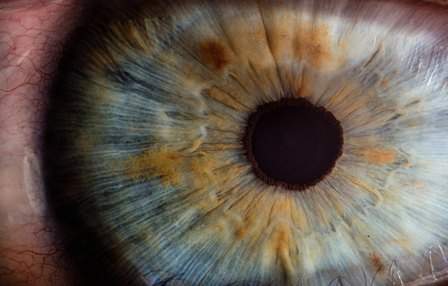Kala Pharmaceuticals has submitted a new drug application (NDA) to the US Food and Drug Administration (FDA) for KPI-121 0.25%, a topical product candidate being developed for the temporary relief of signs and symptoms of dry eye disease.

Image: Kala Pharmaceuticals has submitted NDA to FDA for KPI-121 0.25% to treat dry eye disease. Photo: courtesy of oldskool photography / Unsplash.
Subscribe to our email newsletter
There are an estimated 33 million patients with dry eye disease in the U.S. and Kala’s market research indicates that approximately 90% of these patients have flares associated with their dry eye disease.
If approved, KPI-121 0.25% could offer a favorable management option for these dry eye flares and other dry eye-associated conditions.
KPI-121 0.25% utilizes Kala’s AMPPLIFYTM mucus-penetrating particle (MPP) Drug Delivery Technology, which are selectively-sized nanoparticles with proprietary coatings that significantly enhance drug penetration and distribution in ocular tissues. In preclinical studies, MPPs increased drug delivery into ocular tissues more than three-fold by facilitating penetration through the tear film mucus.
The NDA filing is supported by three clinical trials studying approximately 2,000 patients with dry eye disease, including one Phase 2 trial and two Phase 3 efficacy and safety trials, STRIDE 1 and STRIDE 2 (STRIDE – Short Term Relief In Dry Eye).
KPI-121 0.25% achieved statistical significance for the primary sign endpoint of conjunctival hyperemia in the intent to treat (ITT) population in the Phase 2 trial and both Phase 3 trials.
KPI-121 0.25% also achieved statistical significance for the primary symptom endpoint of ocular discomfort severity at Day 15 in the ITT population in STRIDE 1 with a trend towards a treatment effect in STRIDE 2, as well as a positive treatment effect observed in Phase 2.
Statistical significance was achieved in STRIDE 1 for the second primary symptom endpoint of ocular discomfort severity at Day 15 in patients with a more severe baseline discomfort, with a strong trend towards a treatment effect observed for the same endpoint in STRIDE 2.
Positive treatment effects were also observed in both trials for the symptom endpoint of ocular discomfort severity in the ITT population at Day 8, which was a key pre-specified secondary endpoint. KPI-121 0.25% was well-tolerated in all three trials with elevation in intra-ocular pressure, a known side effect with topical corticosteroids, similar to vehicle (placebo).
Kala Pharmaceuticals chief medical officer Dr Kim Brazzell said: “We are pleased to submit the NDA for KPI-121 0.25% to the FDA.
“We believe the data from STRIDE 1, STRIDE 2 and the Phase 2 trials demonstrate a robust data package supporting the clinically meaningful efficacy, safety and tolerability of KPI-121 0.25%. Today, there are limited treatment options for dry eye disease and KPI-121 0.25% has the opportunity to address significant unmet needs for patients and health care professionals.”
Kala has also initiated a third Phase 3 clinical trial, STRIDE 3, evaluating KPI-121 0.25% for the temporary relief of the signs and symptoms of dry eye disease.
The primary endpoints for the study will be symptom-focused. Kala has conducted a comprehensive analysis of the data generated in the previous three clinical trials and believes it has identified key factors that contributed to the differences observed in the results from STRIDE 2 compared to those of STRIDE 1 and Phase 2.
Kala has integrated these factors into the trial design of STRIDE 3, which it believes will improve the probability of success for the trial. The Company expects to report top-line results for STRIDE 3 in the fourth quarter of 2019.
The STRIDE 3 trial is a multicenter, randomized, double-blind, placebo controlled, parallel-arm study comparing KPI-121 0.25% to placebo, each dosed four times a day (QID) for 14 days, in approximately 900 patients with dry eye disease. Subjects who meet initial screening and inclusion/exclusion criteria undergo a 2-week run-in period with placebo.
Subjects who continue to meet inclusion/exclusion criteria after the run-in are randomized to either KPI-121 0.25% or placebo.
The primary endpoints, Day 15 ocular discomfort severity in the ITT population and Day 15 ocular discomfort severity in patients with a more severe baseline discomfort, are based upon a patient diary in which ocular discomfort is recorded daily over the entire course of the trial using a visual analog grading scale. Topline data from this study is expected in the fourth quarter of 2019.
Kala is developing KPI-121 0.25% for the temporary relief of the signs and symptoms of dry eye disease utilizing a two-week course of therapy administered four times a day.
Dry eye disease is a chronic, episodic, multifactorial disease affecting the tears and ocular surface and can involve tear film instability, inflammation, discomfort, visual disturbance and ocular surface damage. KPI-121 0.25% utilizes Kala’s AMPPLIFY mucus-penetrating particle (MPP) Drug Delivery Technology to enhance penetration of loteprednol etabonate (LE) into target tissue of the eye.
In preclinical studies, the AMPPLIFY Drug Delivery Technology increased delivery of loteprednol etabonate (LE) into ocular tissues more than three-fold compared to current LE products by facilitating penetration through the tear film mucus. Kala has completed one Phase 2 and two Phase 3 clinical trials of KPI-121 0.25%.
Kala believes that KPI-121 0.25%’s broad mechanism of action, rapid onset of relief of both signs and symptoms, favorable tolerability and safety profile and the potential to be complementary to existing therapies, could result in a favorable profile for the management of dry eye flares and other dry eye associated conditions.
Source: Company Press Release
 Advertise With UsAdvertise on our extensive network of industry websites and newsletters.
Advertise With UsAdvertise on our extensive network of industry websites and newsletters.
 Get the PBR newsletterSign up to our free email to get all the latest PBR
news.
Get the PBR newsletterSign up to our free email to get all the latest PBR
news.

